|
AMCC Storage 3ware 9690SA SAS/SATA RAID Controller

Test Results
One of the most important aspects of a RAID controller, with regard to performance, is the ability to perform very fast read and write operations on a variety of block sizes. Since this controller features an onboard cache, it will be interesting to see how the read and write speeds vary depending on the size of the block of data. For sequential read and write operations, blocks that are smaller than the controller cache size will be written faster than they are read. Overall, both sequential read and sequential write speeds should decline slightly as the block sizes get larger, because of the increased IO overhead which is mitigated in part by the efficiency of the cache mechanism. Random reads and writes defeat the cache mechanism by requesting data from a variety of positions all over the drive. In this case, both read and write speeds will be slower than sequential because of the inability of the cache to speed up operations. Of course, the performance characteristics of the controller are determined by the speed and performance of the drives in the array. The drives that I am using are some of the fastest on the market, so drive performance will not be as much of an issue in this case.
Enough theory from me, lets get to the benchmarks!
Blocksize 50MB
| Windows Vista Ultimate Service Pack 1 | Windows Server 2008 |
 |
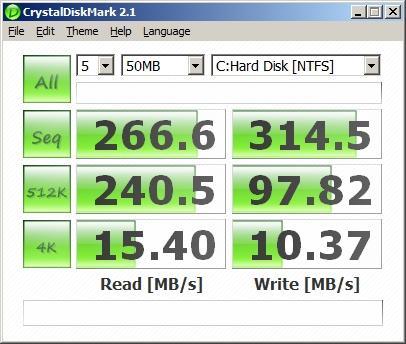 |
The first thing that I noticed when I ran this benchmark was the sheer speed with which this controller card handled sequential reads and writes to the array. The fastest SATA drives can push data is 150MB/second. This array is pushing at least double that. As for reads, there is an 80% speed increase over SATA. The random reads and writes were quite fast as well. While those numbers at the bottom of the benchmark may look very small, those are actually extremely small block size random reads, which effectively bypasses the disc and controller cache.
Blocksize 100MB
| Windows Vista Ultimate Service Pack 1 | Windows Server 2008 |
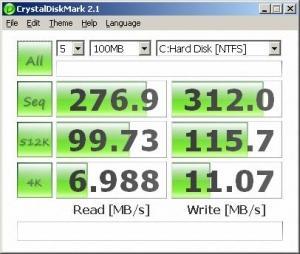 |
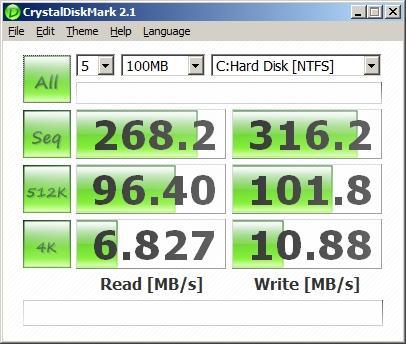 |
As I predicted, the read speeds are beginning to decrease, as the amount of time spent aligning disc spindles increases; the true power of this RAID card comes into play on the writes, which actually increase in speed. That is the power of a RAID card with onboard cache RAM; regardless of the blocksize, write performance stays pretty constant
Blocksize 500MB
| Windows Vista Ultimate Service Pack 1 | Windows Server 2008 |
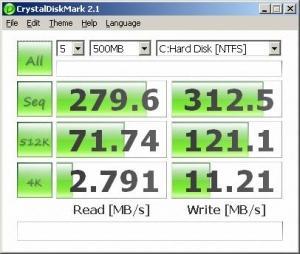 |
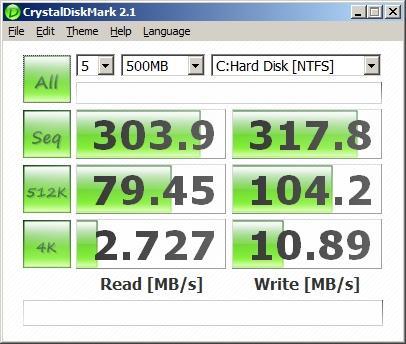 |
Again, the read speeds are decreasing while the write speeds still increase. This increase is due, in part, to the fact that it the nature of a write operation means that placement on the array does not matter; the controller does not have to wait on the discs to sync up. The nature of read operations depend heavily on the location of the files on the array, so the average read operation may be spread over only one or two disks at a time, limiting transfer speed.
Blocksize 1000MB
| Windows Vista Ultimate Service Pack 1 | Windows Server 2008 |
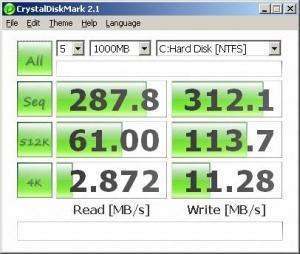 |
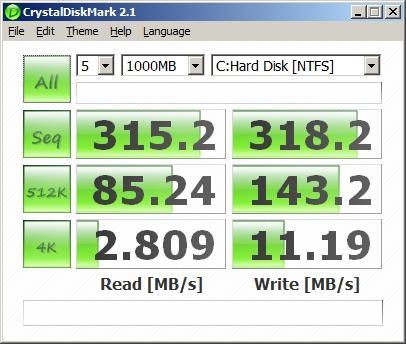 |
And finally, just for fun, I cranked this beast up the the largest block size just to see what would happen. Random reads and writes are still declining, but sequential behaves as expected: that is lightning fast!
REAL TIME PRICING




